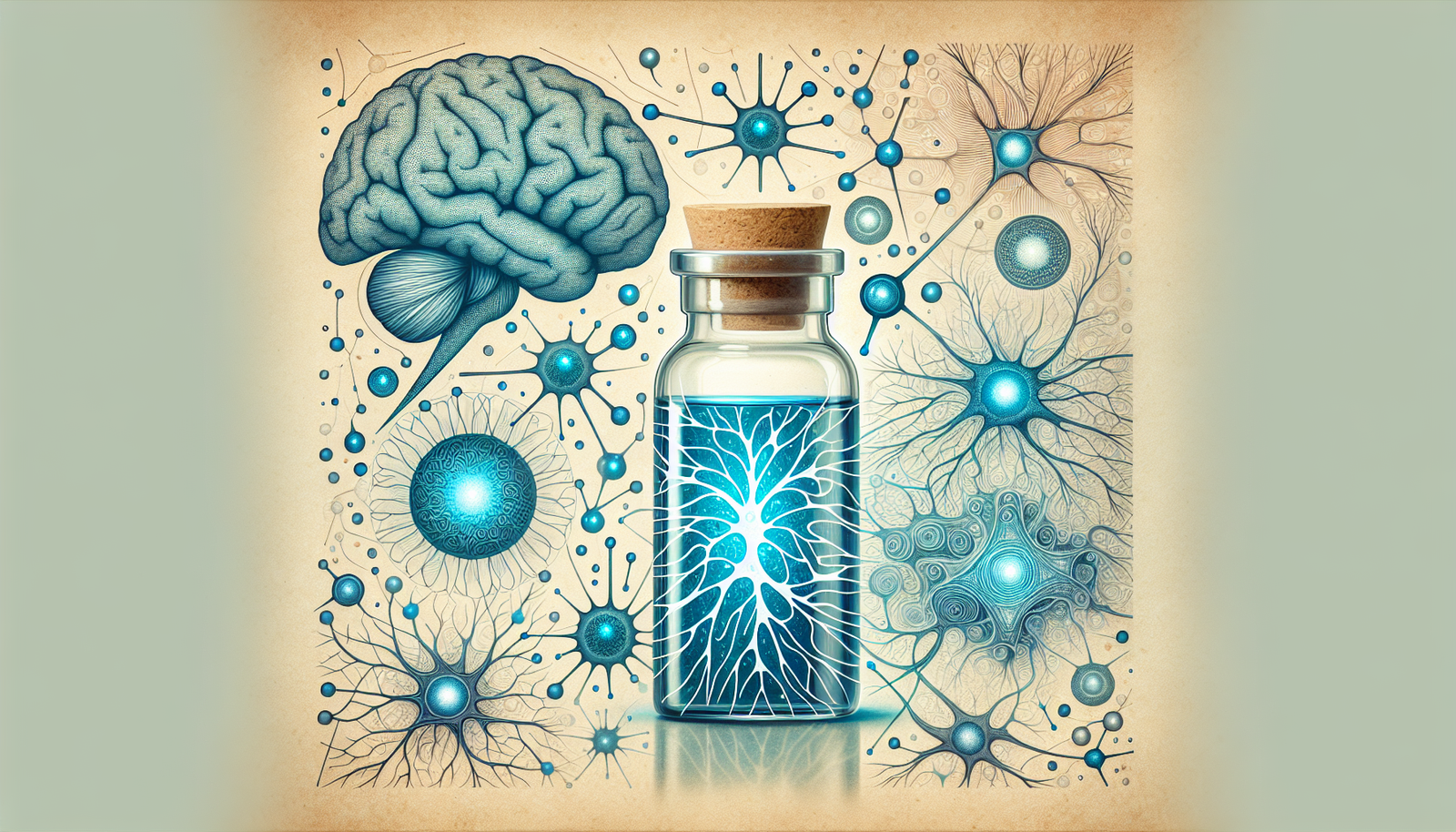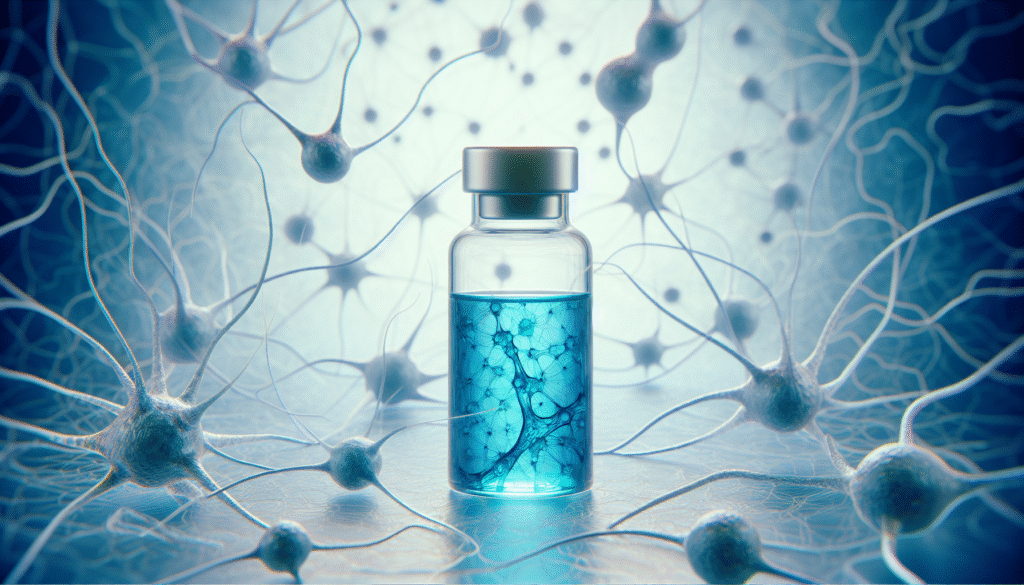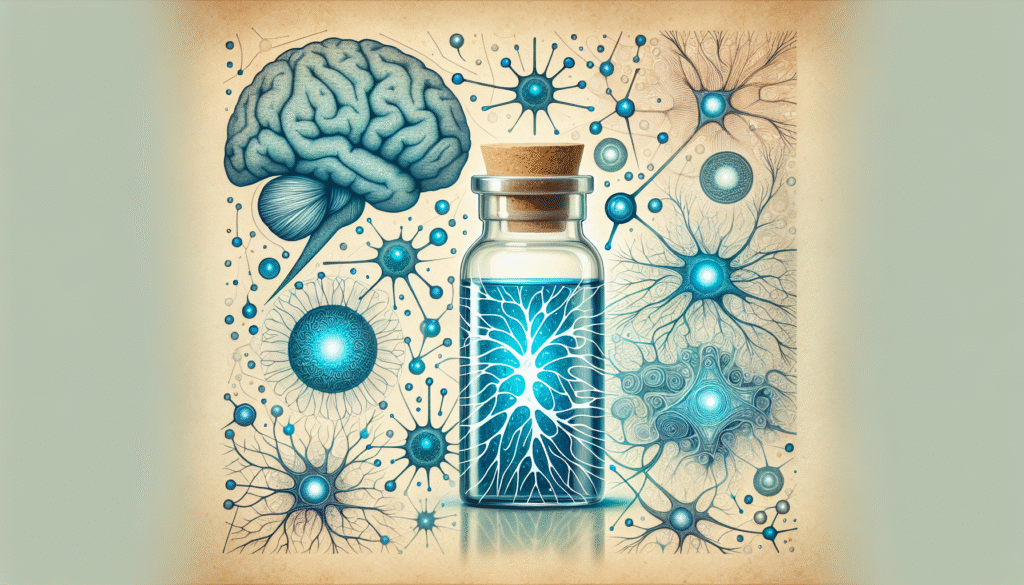
Have you ever wondered how certain substances can influence cognitive processes and the overall health of the brain? One such compound, methylene blue, has garnered attention in both scientific and medical communities for its potential effects on brain function.
The Nature of Methylene Blue
Methylene blue is a synthetic dye, initially developed in the 19th century, that has found applications far beyond its original use. While it may be most commonly recognized for its role in staining biological specimens, its pharmacological properties are coming into sharper focus.
Researchers have begun to investigate methylene blue as a possible therapeutic agent in a variety of medical conditions, particularly neurodegenerative diseases. Understanding its mechanisms in the brain is paramount to unlocking its full potential.
Chemical Composition and Properties
Methylene blue, chemically known as thionine, is an aromatic heterocyclic compound. Its blue color is attributed to the presence of a specific chromophore. This compound is soluble in water and appears as a blue crystalline powder in its solid state. Its chemical structure allows it to penetrate biological membranes, making it a candidate for neurological applications.
Historical Context
Historically, methylene blue was used as a treatment for malaria and methemoglobinemia. In the 20th century, its role expanded to include uses in psychosocial studies and psychiatry. Its re-emergence in recent years stems from a renewed interest in its neuroprotective effects, particularly concerning oxidative stress and mitochondrial function in neurons.
Mechanisms of Action in the Brain
The effects of methylene blue on the brain are multifaceted. Understanding these mechanisms is key to grasping how it can influence cognitive health and neuroprotection.
Antioxidant Properties
Methylene blue is recognized for its potent antioxidant properties. By scavenging free radicals, it mitigates oxidative stress, a condition linked to various neurodegenerative diseases.
| Mechanism | Description |
|---|---|
| Free Radical Scavenging | Methylene blue reacts with reactive oxygen species (ROS), neutralizing them and preventing cellular damage. |
| Reducing Oxidative Stress | By lowering oxidative stress levels, methylene blue helps in maintaining neuronal integrity and function. |
Mitochondrial Dysfunction
Neurons are particularly sensitive to changes in mitochondrial function. Methylene blue is thought to enhance mitochondrial respiration, thereby improving energy production within neurons. This improved ATP (adenosine triphosphate) synthesis is critical for maintaining neuronal activity and overall brain health.
Neuroprotective Effects
Research indicates that methylene blue exhibits neuroprotective effects in various contexts. In experimental models of neurodegenerative diseases, it has been shown to reduce neuronal cell death.
| Neuroprotective Action | Outcome |
|---|---|
| Inhibition of Apoptosis | Methylene blue may promote cell survival by inhibiting programmed cell death in stressed neurons. |
| Modulation of Neuroinflammation | It potentially reduces inflammatory processes that contribute to neuronal damage. |
Cognitive Enhancement
Some studies suggest that methylene blue may enhance cognitive function. Low doses have been connected to improved memory and learning processes.
| Cognitive Function | Effect |
|---|---|
| Memory Enhancement | Methylene blue increases memory retention in certain conditions. |
| Attention Improvement | It may improve focus and cognitive performance. |

Therapeutic Applications
Given its diverse mechanisms of action, methylene blue holds potential for various therapeutic applications, particularly in neurology and psychiatry.
Neurodegenerative Diseases
The potential for methylene blue as a treatment for neurodegenerative diseases such as Alzheimer’s and Parkinson’s is promising. Its antioxidant and neuroprotective properties make it a candidate for preventing or slowing the progression of these disorders.
Mood Disorders
Emerging research suggests methylene blue may also play a role in treating mood disorders. Its influence on serotonin and other neurotransmitters could offer new avenues for therapy in conditions such as depression and anxiety.
Anesthesia and Surgery
Methylene blue has been utilized in specific surgical contexts, particularly in the identification of certain types of tumors. Its properties may assist in visualizing structures during procedures.
Dosage and Administration
Understanding the appropriate dosage and methods of administration is essential for maximizing the benefits of methylene blue while minimizing potential side effects.
Dosage Recommendations
The effective dosage can vary based on the condition being treated, individual response, and other factors. Research suggests that lower doses may enhance cognitive function, while higher doses may be required for therapeutic efficacy in other conditions. Generally, doses ranging from 0.5 mg to 4 mg per kilogram of body weight have been investigated.
Routes of Administration
Methylene blue can be administered via different routes:
| Route | Description |
|---|---|
| Oral | Used for long-term treatment options, typically in supplement form. |
| Intravenous | Commonly used in clinical settings for immediate action. |

Safety and Side Effects
While methylene blue is generally considered safe when used appropriately, it is still vital to be aware of potential side effects and contraindications.
Common Side Effects
Individuals taking methylene blue may experience some common side effects, including:
- Nausea and vomiting
- Headaches
- Dizziness
- Confusion
Serious Risks
In higher doses, methylene blue can pose serious risks. You should be particularly cautious if you have conditions such as:
| Condition | Risk Level |
|---|---|
| G6PD Deficiency | Risk of hemolytic anemia; care must be taken when considering treatment. |
| Serotonin Syndrome | Risk when combined with certain antidepressants; symptoms include increased heart rate and agitation. |
Research Findings
Exploring the vast body of research surrounding methylene blue reveals a growing interest in its implications for brain health.
Studies on Neuroprotection
Recent studies have supported its neuroprotective role in models of Alzheimer’s disease and traumatic brain injury. For instance, methylene blue has been shown to reduce amyloid-beta toxicity, a hallmark of Alzheimer’s pathology.
Clinical Trials
Ongoing clinical trials are examining the efficacy of methylene blue in various populations. The outcomes of these trials may provide insight into optimal dosing regimens and therapeutic benefits.
Future Directions
The future of methylene blue research is promising, with many unanswered questions still requiring investigation. Further studies might explore its use in combination therapies, synergistic effects with other compounds, and long-term safety profiles.
Combination Therapies
The potential of methylene blue in combination with other neuroprotective agents could open new frontiers in treatment. Future research may identify effective synergistic combinations, enhancing its effectiveness.
Personalized Medicine
As the field of personalized medicine continues to evolve, understanding individual responses to methylene blue based on genetic factors may tailor its application to maximize benefits.
Conclusion
Methylene blue represents a fascinating compound with a rich history and promising future in brain health. Its multifaceted mechanisms of action highlight its potential as a neuroprotective and cognitive-enhancing agent.
As research continues to unfold, staying informed about the mechanisms, benefits, and risks associated with methylene blue will be essential for individuals and health professionals alike. By understanding methylene blue’s potential in the brain, you can better navigate the evolving landscape of neurological health and wellness.